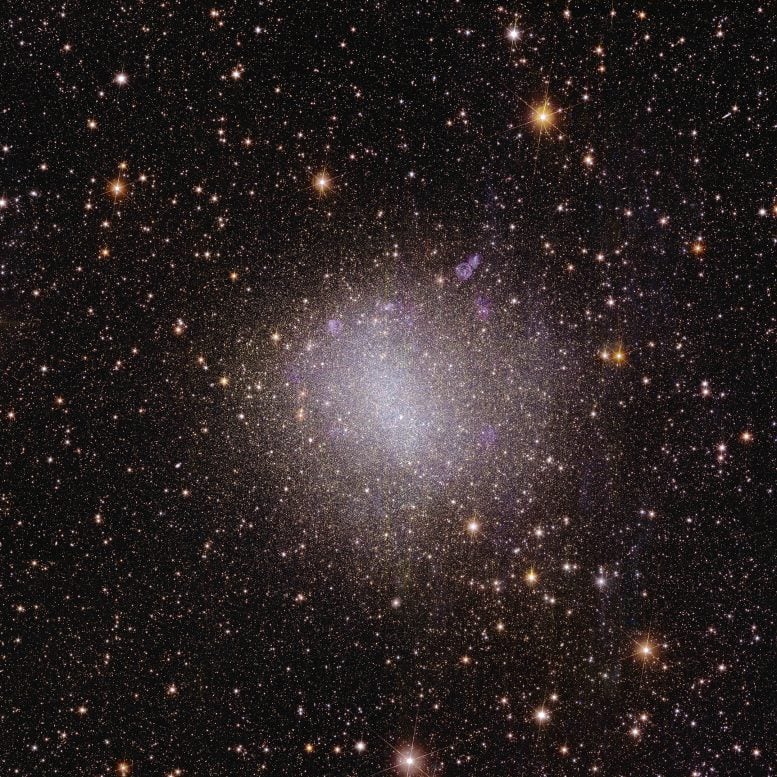
Euclid’s space mission has captured a detailed image of NGC 6822, a dwarf galaxy with low metallicity stars, providing insight into the conditions of the early Universe. By observing globular clusters within the galaxy, Euclid helps unravel the history of galaxy formation. Credit: ESA/Euclid/Euclid Consortium/NASA, image processing by J.-C. Cuillandre (CEA Paris-Saclay), G. Anselmi, CC BY-SA 3.0 IGO
Euclid’s View of Irregular Galaxy NGC 6822
Euclid’s high-resolution imaging of the NGC 6822 galaxy and its globular clusters offers new perspectives on the Universe’s early galactic formation and evolution.
Euclid’s Mission to Map the Universe in 3D
To create a 3D map of the Universe, Euclid will observe the light from galaxies out to 10 billion light-years. Most galaxies in the early Universe don’t look like a neat spiral but are irregular and small. They are the building blocks for bigger galaxies like our own.
Discovering the Early Universe With NGC 6822
This first irregular dwarf galaxy that Euclid observed is called NGC 6822 and is located close by, just 1.6 million light-years from Earth. It is a member of the same galaxy cluster as the Milky Way (called the Local Group), and was discovered in 1884. In 1925 Edwin Hubble was the first to identify NGC 6822 as a ‘remote stellar system’ well beyond the Milky Way.
Insights Into Galactic Evolution
NGC 6822 has been observed many times since, most recently by the NASA/ESA/CSA James Webb Space Telescope. But Euclid is the first to capture the entire galaxy and its surroundings in high resolution in about one hour, which would not be possible with telescopes on the ground (the atmosphere prevents this sharpness) or with Webb (which makes very detailed images of small parts of the sky).
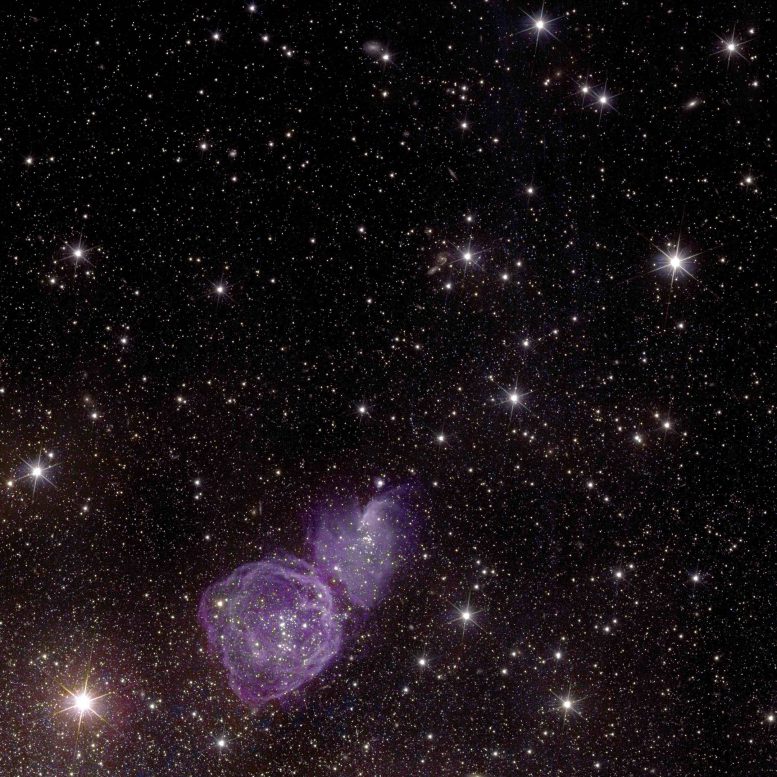
This cutout from Euclid’s full view of NGC 6822 is at the high resolution of the VIS instrument. This is nine times better than the definition of NISP that was selected for the full view; this was done for the practical reason of limiting the format of the full image to a manageable size for downloading. The cutout fully showcases the power of Euclid in obtaining extremely sharp images over a large region of the sky in one single pointing. Although this image represents only a small part of the entire color view, the same quality as shown here is available over the full field. Credit: ESA/Euclid/Euclid Consortium/NASA, image processing by J.-C. Cuillandre (CEA Paris-Saclay), G. Anselmi, CC BY-SA 3.0 IGO
One interesting aspect of this galaxy is that its stars contain low amounts of elements that are not hydrogen and helium. These heavier, ‘metal’ elements are produced by stars over their lifetimes and are therefore not very common in the early Universe (before the first generation of stars had been born, lived, and died).
“By studying low-metallicity galaxies like NGC 6822 in our own galactic neighborhood, we can learn how galaxies evolved in the early Universe,” explains Euclid Consortium scientist Leslie Hunt of the National Institute for Astrophysics in Italy, on behalf of a broader team working on showcasing galaxies imaged by Euclid.
In addition to studying the star-formation history of this galaxy, which can now be done thanks to the color information from Euclid’s near-infrared instrument and its wide field of view, scientists have already spotted many globular star clusters in this image that reveal clues as to how the galaxy was assembled.
The Significance of Globular Clusters
Globular clusters are collections of hundreds of thousands of stars held together by gravity. They are some of the oldest objects in the Universe, and most of their stars were all formed out of the same cloud. That’s why they hold the ‘fossil records’ of the first star-formation episodes of their host galaxies. See also Euclid’s first image of globular cluster NGC 6397.
See more of Euclid’s First Images.


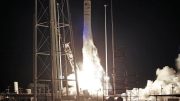
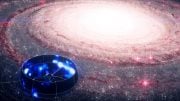
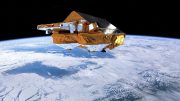
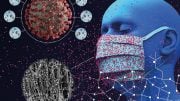
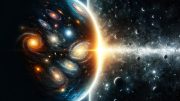
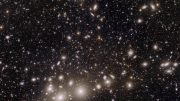
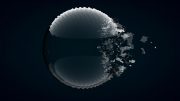
Be the first to comment on "Mapping Cosmic Evolution: Euclid’s Insightful Infrared Snapshot of NGC 6822"